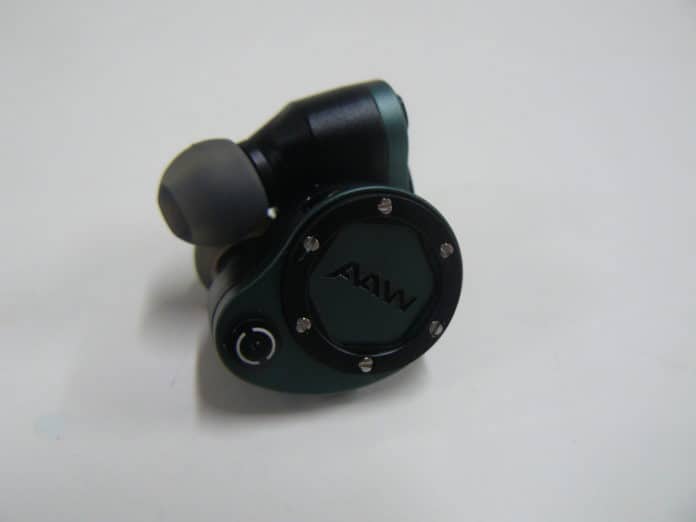I’m always glad to see a brand new pair of premier IEMs reach my desk. This time I got to listen to the Halcyon from AAW, a tri-hybrid electrostatic IEM. AAW has brought some serious competition to the table with past models such as the Mockingbird, Nightingale, and ASH. Now with the Halcyon, AAW aims to design a hybrid architecture with BassFlow control and precision engineering. For $1,499 you should be expecting some beast of an IEM, so let us see how the Halcyon stacks up.
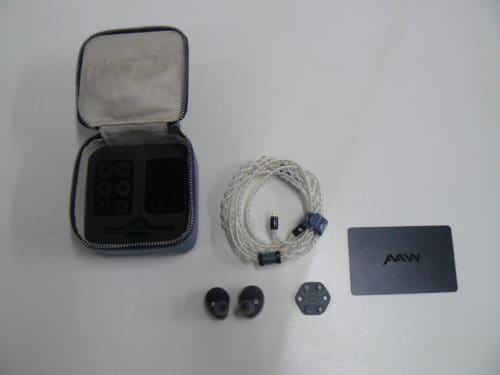
What You Get
This package comes loaded with a few big highlights, specifically the control filters which you’ll see lying under the earpieces themselves. The Halcyon comes in a rectangular box that lists a lot of its key specifications, as well as some important features on the back. Inside the box, you’ll see the Halcyon earpieces themselves placed in padded inserts keeping them safe. Under them are the aforementioned bass control filters, and to the left, you’ll see an attractive genuine leather storage case. Inside this carrying case are the monocrystalline cable, 12 ear tips, cleaning tool, and owners club card. The card is just as useful as the one you get when you subscribe to the Criterion Chanel. The ear tips have a nice presentation, and I appreciate that AAW offers some options.
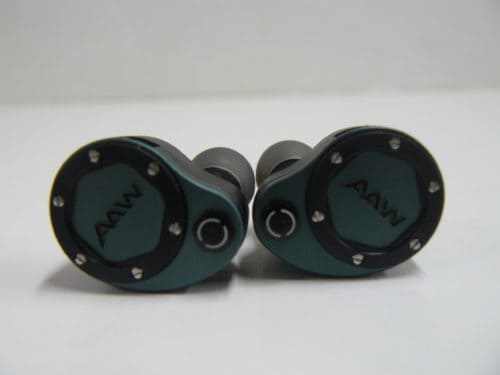
Look and Feel
My first impression of the Halcyon was they looked like mini ears a robot would wear. The shell is shaped like your outer ear and the lobe is where the filters go. The overall aesthetic screams industrial, with its circular bolted ring, and green finish. The housing extends to a degree, creating a bulgy design, but this IEM packs a lot of components inside its thick anodized shell so that can be forgiven as long as it is still comfortable enough to wear. On the outside, the Halcyon may seem like it could be a little obtuse to put in your ear, but the suction and nozzle created a fine fit that secures the IEM within your ear. The shape of the body makes sense as it mostly matches the anatomy of your ear. The body protrudes from your ear canal a little bit, but the aluminum shell can still be felt at times, especially when they get cold.
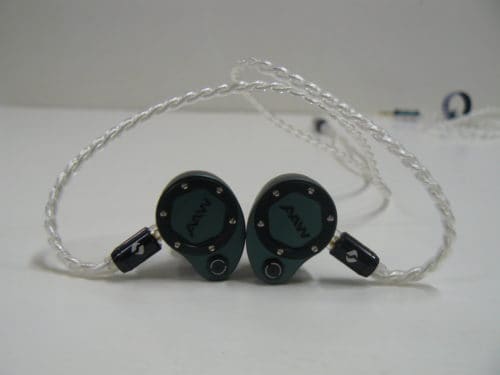
Design
The real bulk of this review is going to focus on the complex design AAW has accomplished with the Halcyon. Let’s start with the tri-hybrid driver technology. The Halcyon contains a 7 driver system that consists of 4 electrostatic, 2 balanced, and a 10mm dynamic. The dynamic driver supports a graphene diaphragm and performs a lot of the duties a sub-woofer would. The balanced drivers do the job or outputting most of the mid-range information, and the electrostatics for the highs. The electrostatic drivers support a 4-way passive+acoustic crossover that helps with phase control and gives the Halcyon a more complete frequency response.
The main event of the Halcyon is its BassFlow Control system. How this works is through a system of attachable filters that resemble tiny nodes. You attach them to the bottom of the earpieces, and in turn, change part of the textural fidelity of the lower frequencies. There are 3 pairs of different nodes, one for bass, norm, and Vokal. The bass filter acts as a boost, giving low frequencies a just noticeable gain. The norm in a way is the factory default, still delivering an ample bass response but at a flatter level. The Vokal filter acts to attenuate some fundamental sub-bass frequencies, in case you’re more of a mids and highs focused fellow. It’s a unique feature that makes this particular IEM very versatile and an all-encompassing product making for a valuable purchase.
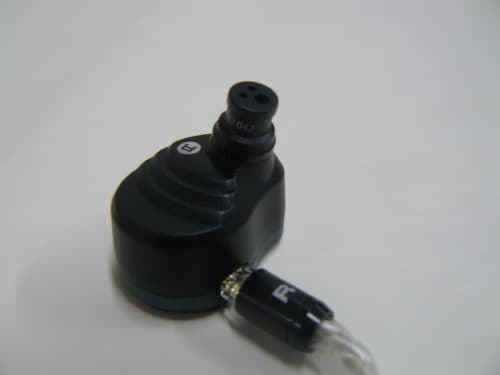
Output
The Halcyon is a very energetic IEM. It has a sensitivity of 104dB and an impedance of 24 Ohms, making the Halcyon an IEM on the sensitive side. The frequency response sits around 10Hz-100kHz which gives the Halcyon a wide range of potential fidelity.
Soundstage
As sensitive as the Halcyon is, you’d expect a more aggressive response, but it’s an impressively nuanced, and expansive soundstage that isn’t afraid to reach outside its boundaries. It presents the sound elements with power and is still able to leave enough headroom for them to breathe. The sounds represent panning and placement with hard accuracy. Ambient tracks stand out here, as I could feel some tracks float outside my head. For example, I listened to the “Hyper Light Drifter” Soundtrack by Disasterpeice, and the surreal soundscapes expanded outward like dust. Instrumental placement in classical and Jazz tracks receive great spacing so that individual elements can be paid attention to.
Low End
The lows can either gain or lose a significant amount of power depending on which filters you use. The norm filters gave me a deeper bass response than I was expecting. There’s a sub-bass feel in some tracks that delved deep into my throat. The track “I Was a Teenage Anarchist” by Against Me had this aggressive kick drum that pounded right on the center of my skull, It was awesome. It left me wondering what the added bass filter would actually do. The answer was that in place of depth, you now have a more resonant low end, which makes better use of the soundstage for the lows. This was helpful when listening to low strings, and gave the signature a warmer timbre. The Vokal filters attenuate a lot of this response without losing much in fidelity. Instead, the lows start to complement the more detailed mids and highs, creating a flatter, more balanced signature.
Mids
These mids are crisp and full of liveliness. It isn’t as full as I wanted, but it takes advantage of those boosted low mids, giving heavy rock tracks a needed drive, and lower vocal registers a smooth sense of intimacy. With the Vokal filter, the mid-range improves, showing off more unique subtleties Piano notes have a glistening consistency in this range too making tracks like Johann Johannson’s “Flight From The City” an impactful experience and adds an extra layer of introspection to its fluttery timbre.
Highs
No matter which filter I try, the highs always come out the winner of this sound signature for me. Textures with pristine shine, and detailed with analytical artifacts, the highs present a swath of fidelity that gives high-end sound elements a fine sense of clarity. A little low in amplitude, but still swarming with richness. I previously mentioned how the highs expand, then dissipate into the air like dust, and I sensed that the super tweeters were really doing the work. Reverb tails dissipate naturally, making crash cymbals, and ambient soundscapes feel especially airy.

Summary
For $1,499 the Halcyon offers a ton in the realm of versatility. I believe AAW has created an IEM that has a timbre for everyone. With their Bass Flow Control system AAW marks an innovation in IEM technology that I haven’t seen before, and that alone is commendable. If you’re a seasoned veteran in IEMs and are willing to dish out the cash for the end all be all of in-ear listenings, I would absolutely recommend the Halcyon.
Pros and Cons
Pros: Excellent timbre, durable design, wide soundstage
Cons: Price, filters are tiny and if lost, can be hard to replace
AAW Halcyon available from Audio 46
MAJORHIFI may get a commission from retail offers.
Compare the ranking of various headphones, earbuds and in-ear monitors using our tools.
Discuss this, and much more, over on our forum.
---MAJORHIFI may receive commissions from retail offers.


